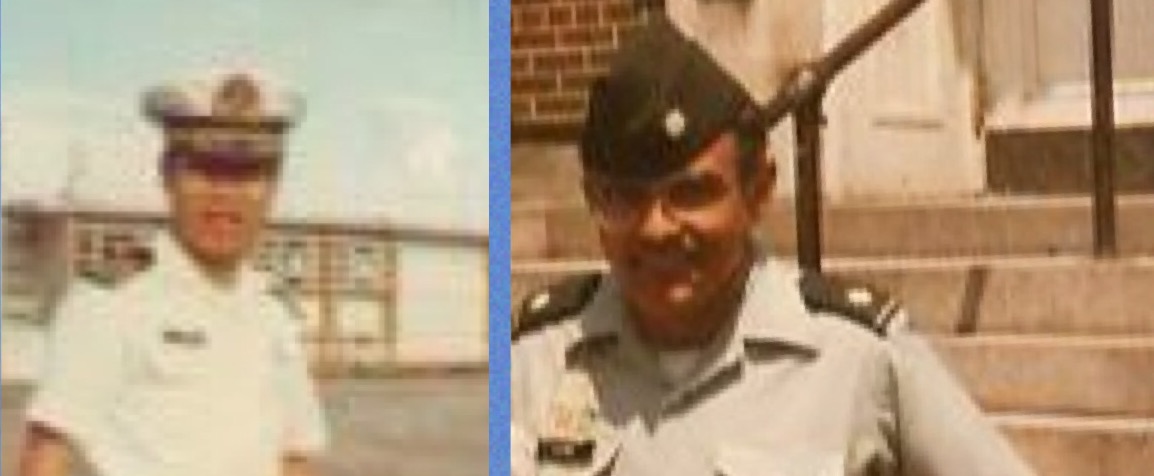|

INTRODUCTION This great opportunity not only provided rich experiences and beautiful memories, it changed the way I thought about the Vietnam War and affected my faith, the faith of a sailor enthusiastically committed to his country and her people. Colonel Rowe was my counterpart when we worked together in The Military Instruction Directorate at VNMA and later became my dear friend and sponsored my family when we immigrated to the United States in 1975. In the summer of 2016, Colonel Rowe and I decided to write our War and Peace stories together as a reminder of our wonderful memories. A spiritual opportunity for two of us to work together at VNMA, to dedicate this memoir to former VNMA young cadets, one of the proudest family members of the Vietnamese National Military Academy, the famous school of the people of Vietnam. This is a story of two officers who never knew each other before, who came together from many differences; different countries, culture, customs, origins, religion, ethnic background, different Armed forces: one from South Vietnam (SVN) Navy, the other from US Armor. The main thing they had in common, they both fought for their beliefs in duty that included leadership and responsibility, the honor of officers and in the idealism for Freedom and Democracy for all mankind regardless of who they are. They met one another at the patriotic environment at the right moment of a destiny that already was planned for the future friendship with special ties for the rest of their lives. They had become “Brothers in War and Peace.”
Brothers are usually defined as people of a same family with siblings and parents. But, Brothers in War are bonded with loyalties that come from fighting alongside of each other and becoming friends. They are always ready to help each other at any circumstance that might happen to others. The journey of destiny began after Ensign Lê Bá Thông graduated and was on-the-job-training duty on the USS Platte AO 24, a U.S Navy Fleet Oiler1 assigned to the Seventh Fleet in the Pacific Ocean.
Thông returned to Vietnam early after the USS Platte’s assignment was over and sailed back to his homeport at U.S Yokusuka Naval Base in Japan.
In December 1962, Ensign Lê Bá Thông left the ram of the Landing Ship Mechanized (LSM) HQ 402 under Navy gunfire support, to accompany the second wave of SVN Marines, landing on the muddy shore of Cà Mâu peninsula. Thus, Thông began his Naval career with his combat experiences with the SVN Marines on the muddy banks of the Năm Căn and Cà Mâu, located about 10 kilometers from the southern end of Vietnam. During the Vietnam War, Major D E Rowe had volunteered to go to Vietnam to assist the South Vietnamese military in defending their homeland against the aggression of the Communist bloc: Russia, China and North Vietnam, in their attempt to occupy South Vietnam. With his first assignment in Vietnam as advisor to the SVN Battalion in Quảng Ngăi Province, Major Rowe witnessed the killing and murder of innocent South Vietnamese villagers and officials by the Việt Cọng guerillas as well as the destruction of schools and facilities that were built for the villagers and their families. Later, Major Rowe and LCDR Lê were both assigned to the Military Instruction Directorate in charge of the military and physical training of the Cadets and Midshipmen of the Vietnamese National Military Academy (VNMA). They acted as mentors to educate the Cadets and Midshipmen in leadership and discipline as well as overseeing their overall welfare. They encouraged these young men in the sentiment of love for country, love for their comrades-at-arms, and love for their fellow man. “Country, Honor and Duty” was the motto they impressed upon the Cadets and Midshipmen to keep forever in their hearts and mind as they became officers to carry out their responsibilities and devoted themselves to fighting for freedom and democracy for the Vietnamese people after graduation. With the natural beauty of the Trường Sơn Mountains in the background, the two officers from different countries, cultures, and military branches, developed a life-long friendship through their similar personalities, strong character, knowledge, and experiences; a special bond that has endured throughout the war and peace time in their lives. Commander Lê Bá Thông’s journey toward freedom with his family began on the afternoon of 30 April 1975. After receiving the order by the South Vietnamese President to drop their weapons and surrender to the North Vietnam Communist Armed forces advancing to occupy Saigon, Commander Lê was forced to leave his country and his loved ones to escape with his partial family among other South Vietnamese soldiers to be free. They had left the fallen country aboard a fishing trawler that he helped to navigate through Soài Rạp River fleeing to the South China Sea with about 400 evacuees from Saigon onboard the crowded vessel.
The stories of determination, perseverance, and unrelenting will power to be free during the courageous voyage at sea and over the long days and nights waiting for help in two refugee camps on Wake Island and in Camp Pendleton, CA enriched their lives to help them built their confidence and kept their faith stronger. |